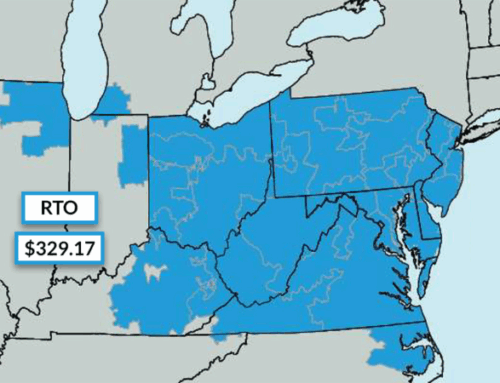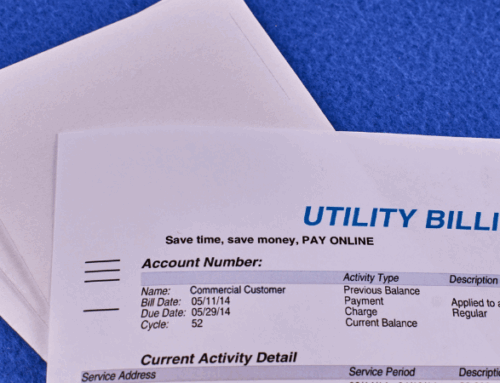As businesses in deregulated energy states, and regulated states for that matter, shift towards renewable energy in an effort to support decarbonization, there is an ongoing debate on the best way to purchase renewable energy supply. One path is through solar power purchase agreements, either from an on-site system or a local community solar farm. Another option for those in deregulated energy states is to purchase a renewable energy plan from a third-party electricity supplier.
Understanding the key differences between solar PPAs and renewable energy supply is critical in accomplishing your green energy goals, as both are not viewed as being equal in the eyes of the market. In this article, we will outline both concepts in an effort to help businesses choose the best path toward achieving clean energy goals.
What Is A Solar Power Purchase Agreement (PPA)?
A solar power purchase agreement is an arrangement between a solar developer and an end-user customer where the customer agrees to purchase electricity generated from the developer-owned solar system. There are two types of solar PPAs. Let’s explore them both in more detail.
On-Site PPA
In an on-site solar PPA, the solar company installs panels at a customer’s location, typically on the rooftop or on carport mounts in the parking lot. The system is owned by the solar company, and through the power purchase agreement (PPA) the customer pays the solar company each month a fixed rate per kWh for all solar-generated electricity.
Off-Site Virtual PPA
In an off-site solar PPA, the solar company owns a solar system that is not located at the customer’s facility, but is connected to the same local grid. These solar structures, such as community solar developments, allow customers to purchase the generated electricity from a third-party solar farm without having to install solar panels at their facility. The billing for virtual PPAs is typically handled by a local utility company or third-party billing administrator.
What Is A Renewable Energy Supply Contract?
A renewable energy supply contract is an agreement between a business and a third-party energy supplier to procure electricity that is sourced from renewable resources such as wind, solar, or hydro. Unlike a solar PPA that requires installing solar panels, these contracts allow businesses to purchase clean energy directly from a supplier, through the use of renewable energy credits, or RECs. There are several types of renewable energy supply plans available:
REC-Backed Supply Contracts
These types of electricity supply plans involve the supplier purchasing RECs along with the power needed to supply a particular set of customers. A single REC represents 1,000 annual kWh generated by a renewable energy source, such as wind and solar. While power coming to a customer from a supplier is being delivered through a centralized electric grid, this buying practice allows the customer and supplier to verify that enough renewable energy credits were purchased to offset 100% of the energy supply.
Unbundled RECs
In a bundled contract, RECs are purchased with the electricity itself. Unbundled RECs, on the other hand, are bought separately and can be applied to offset energy usage, regardless of the power source. Unbundled RECs are often purchased by customers themselves in an effort to offset their electricity usage. Although this method is not as valued as bundled REC plans, it still allows the business to claim that they are purchasing renewable energy supply.
The Key Differences Between Solar PPAs And Renewable Supply
When evaluating whether a Solar Power Purchase Agreement (PPA) or a renewable energy supply contract is the best path toward sustainability, it’s important to understand how the two options differ across key factors:
| PPAs | RECs | |
| Ownership | Third-party developer owns and maintains solar system | No infrastructure needed |
| Contract | Long-term agreements, typically 20-30 years. | Shorter contracts ranging from 1-5 years. |
| Cost & Risk | High legal risk. Offers long-term savings and cost control. | Low risk. Savings potential is less. Could cost more to purchase RECs. |
| Sustainability Reporting | Can contribute to Scope 2 emissions reduction goals when the attributes are retained and properly accounted for. | Simpler to meet sustainability benchmarks; however, RECs cannot always be counted towards emission reduction. |
Pros And Cons For Commercial Buyers
Each renewable energy strategy offers advantages depending on your organization’s goals, site availability, and budget. Here’s when each option may be the better fit:
When a Solar PPA Is Better
- Site suitability for solar: If your facility has ample roof or land space and favorable sun exposure, installing solar through a PPA can be highly cost-effective.
- Long-term energy price stability: Businesses looking to hedge against future utility rate increases can benefit from locked-in PPA pricing over 10 to 25 years. Most solar companies offer PPA rates that are substantially lower than the local utility.
- On-site visibility and control: Solar systems installed on-site allow for greater transparency, system monitoring, and green energy marketing benefits tied to your sustainability efforts.
When Renewable Supply Contracts Are Better:
- Sites without solar potential: Locations with roof constraints, shading issues, or real estate lease agreements that prevent solar installation may be better suited for off-site renewable supply.
- Shorter planning horizons: Companies that want flexibility or anticipate major operational changes may prefer the shorter terms of renewable supply agreements.
- Easier integration with existing supply contracts: In deregulated markets, businesses can often layer RECs or green power into their existing energy contracts without operational disruption.
How Energy Brokers Can Guide The Right Choice
Energy brokers or consultants have vast experience in the renewable energy markets. First, brokers can help to evaluate your energy usage and load profile to determine if an on-site solar array can generate enough electricity to cover your entire load. A broker can also evaluate the suitability of your building for a solar system by analyzing sun exposure, local zoning requirements, and utility interconnection queues. If your facility is not suitable for an on-site PPA, the broker can then help you find a willing energy supplier to purchase RECs on your behalf so that you can declare renewable energy generation. Brokers are also instrumental in comparing pricing, contract structures, and sustainability impacts across both options.
By partnering with an experienced energy advisor like Diversegy, your business can confidently navigate the transition to cleaner energy with a solution tailored to your goals.
Partnering With Diversegy To Align Energy Strategy With Business Goals
Choosing between a solar PPA and a renewable energy supply contract depends on your business’s unique energy needs, sustainability goals, financial outlook, and risk tolerance. There’s no one-size-fits-all answer.
Our team brings deep expertise in electricity procurement, commercial solar solutions, and customized energy supply products to help you make the smartest, most strategic decision. Whether you’re pursuing long-term savings, emissions reduction, or simply want to demonstrate ESG leadership, we’ll guide you every step of the way.
Contact us today to explore the clean energy options that best align with your business goals.



